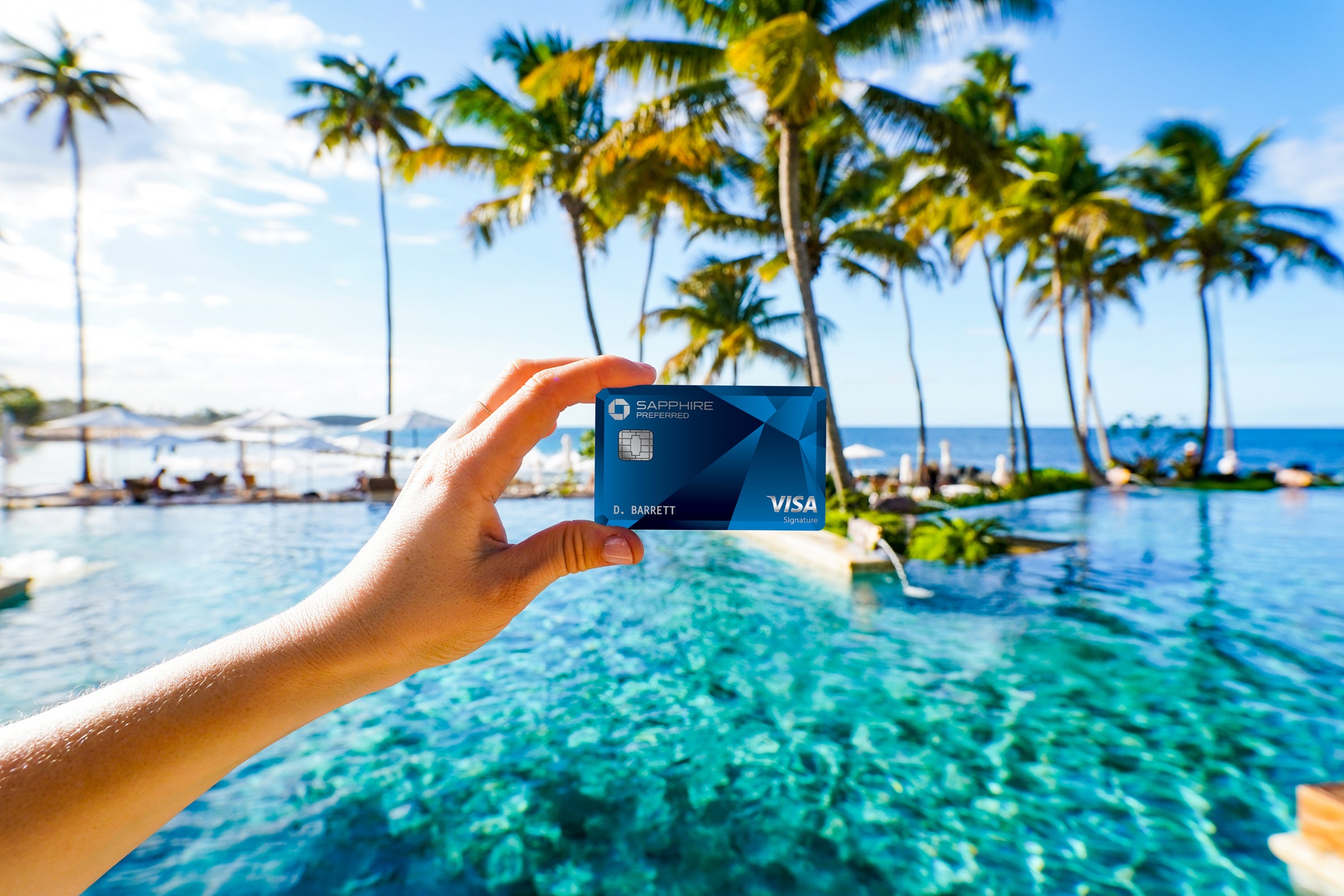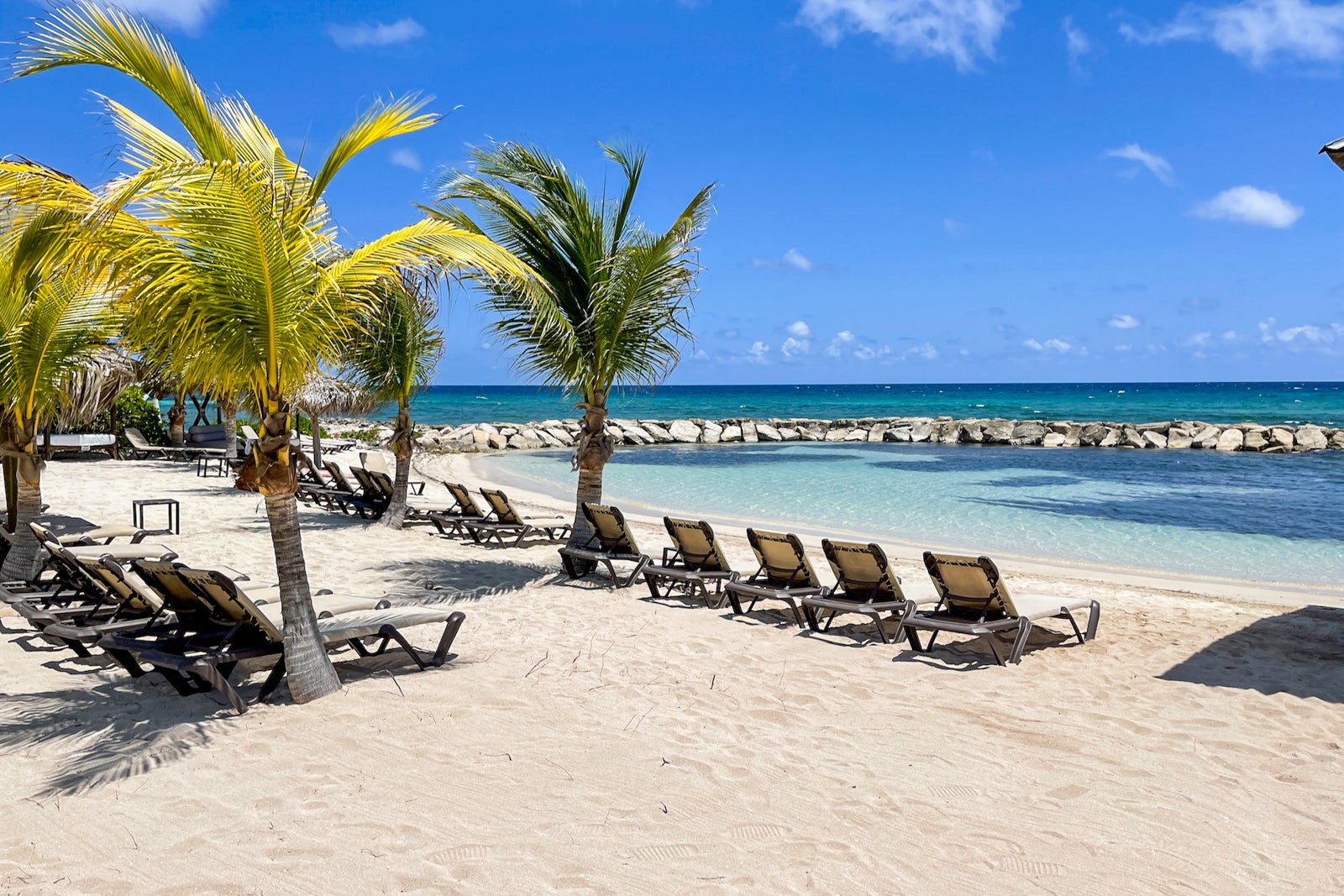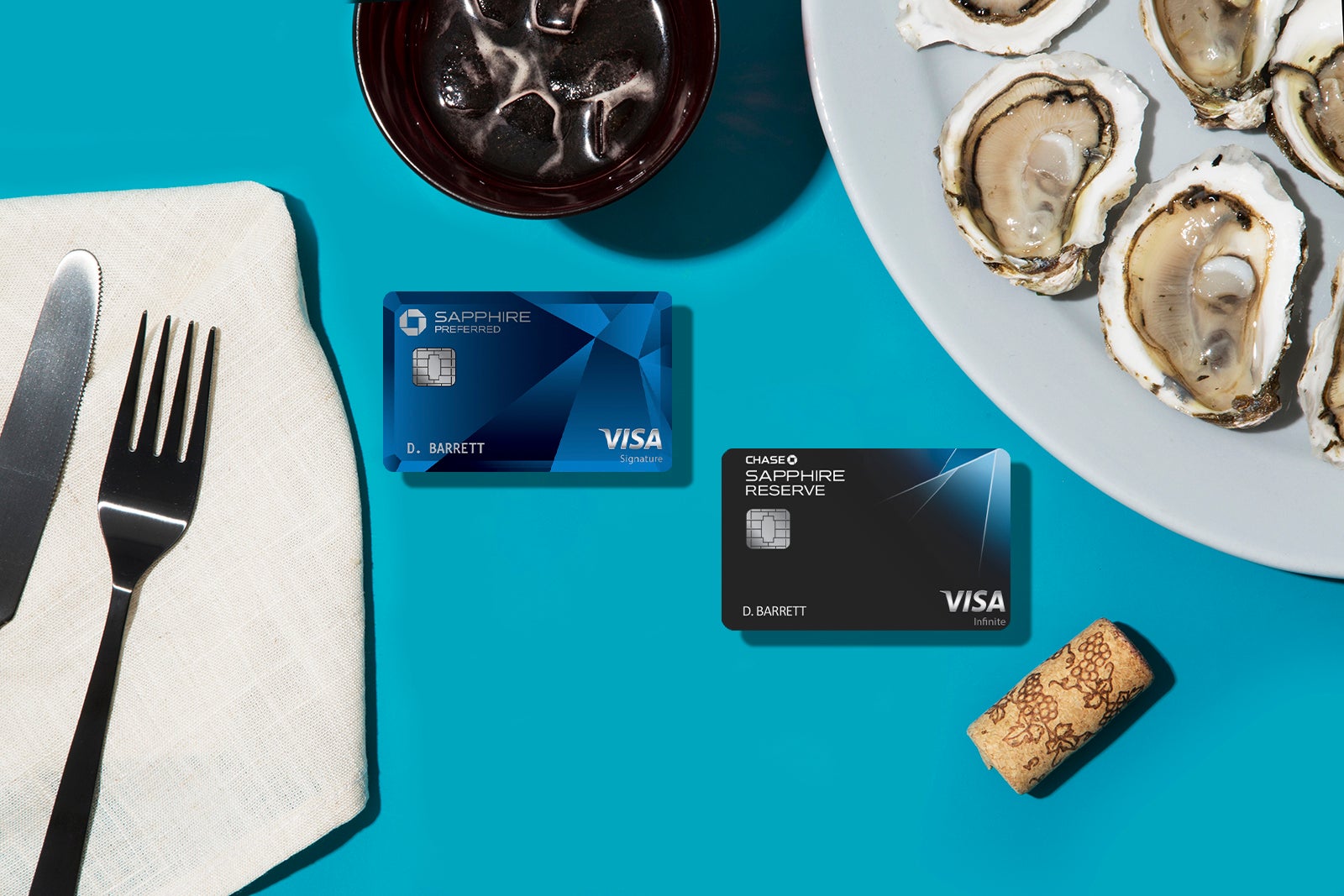The Chase Sapphire Preferred Card and the Chase Sapphire Reserve remain some of the most popular travel rewards credit cards, even years after they first came to market.
That’s partly because of the variety of valuable perks they both offer, but it’s also because Chase keeps promoting excellent sign-up bonuses for both cards.
New to The Points Guy? Sign up for our daily newsletter and check out our beginner’s guide.
The Chase Sapphire Preferred currently offers more points than ever as part of its introductory terms: Earn 100,000 points after spending $4,000 on purchases within the first three months of account opening.
For its part, the Chase Sapphire Reserve is offering new applicants the opportunity to earn 60,000 bonus points after spending $4,000 in the first three months of account opening.
The Chase Sapphire Preferred is favored among budget and midrange travelers thanks to its affordable annual fee of just $95.
The Chase Sapphire Reserve is targeted at more premium customers thanks to its $550 annual fee and upscale perks like Priority Pass Select lounge membership and a Global Entry or TSA PreCheck application statement credit worth up to $100 once every four years.
Those extra benefits might be worth it for some. But if you’re trying to decide between these two phenomenal cards (since you can’t really apply for both and earn both bonuses), here are 12 reasons to choose the Chase Sapphire Preferred instead of the fancier Chase Sapphire Reserve.
Chase Sapphire Preferred vs. Chase Sapphire Reserve
| Card | Chase Sapphire Preferred | Chase Sapphire Reserve |
| Sign-up bonus | 100,000 bonus points after you spend $4,000 in the first 3 months from account opening | 60,000 bonus points after you spend $4,000 in the first 3 months from account opening. |
| Annual fee | $95 | $550 |
| Earning rates |
|
|
| Redemption rate |
|
|
Now let’s dig into the details to see just why the Chase Sapphire Preferred excels when it is the more entry-level of the two cards.

Lower annual fee
First things first: the Chase Sapphire Preferred charges an annual fee of just $95, whereas the Chase Sapphire Reserve’s is $550. That’s a difference of $455 — per year!
Granted, the Chase Sapphire Reserve comes with many perks that can be worth hundreds, or even thousands, of dollars per year (which we’ll get into below). But if you’re just getting started, don’t travel frequently or are not sure whether you’ll use the perks or not, you’re better off opting for the card with the lower annual fee.
Related: Chase Sapphire Preferred review
Higher sign-up bonus
Now for what probably caught your eye — those sign-up bonuses.
The Chase Sapphire Preferred currently offers an all-time high of 100,000 bonus points after spending $4,000 within the first three months from account opening.
That’s 40,000 more points than the Chase Sapphire Reserve, which offers just 60,000 bonus points after spending $4,000 within the first three months of account opening.
Related: Why the Chase Sapphire Preferred should still be the first rewards card in your wallet
Chase Sapphire Preferred Ultimate Rewards points are worth just 1.25 cents apiece when redeemed for travel through Chase or via the issuer’s “Pay Yourself Back” feature toward dining, groceries and home improvement store purchases now through Sept. 30, 2021. The Chase Sapphire Reserve’s points are worth 1.5 cents apiece when redeemed in that manner.
While TPG values all Chase Ultimate Rewards points at 2 cents each when maximized with hotel and airline partners, the reality is that your value will be different if you usually redeem points at a fixed value instead of transferring them.
In that case, 100,000 points with the Chase Sapphire Preferred are worth $1,250 at 1.25 cents each. This is compared to the $900 in value you’d get from 60,000 points with the Chase Sapphire Reserve at 1.5 cents each. That is still a significant difference. But then again, those are only two ways of redeeming Ultimate Rewards points.
Related: Chase Sapphire showdown: Sapphire Preferred vs. Sapphire Reserve
Same great transfer partners and transfer rates
One of the best ways to maximize Chase Ultimate Rewards is to transfer them to the program’s 10 airlines and three hotel partners, including United, British Airways, Southwest, Hyatt and Marriott, among others.
If you plan to use your points this way rather than for direct redemptions through Chase, then the Chase Sapphire Preferred should suffice. That’s because no matter which of these two cards you carry, your Ultimate Rewards points transfer to each airline and hotel partner at a 1:1 ratio.

So the 100,000 points you can earn with the Chase Sapphire Preferred are worth 40,000 more airline miles or hotel points than the 60,000 you can earn with the Chase Sapphire Reserve. And in that case, you might as well go for the card that will net you the most points right out the gate.
Related: How to maximize your Chase Ultimate Rewards points
You still earn bonus points on travel and dining
Aside from their welcome bonuses, the Chase Sapphire Preferred and Chase Sapphire Reserve have similar earning structures and rack up extra points in the same specific categories. Namely, travel and dining.
It’s true, the Chase Sapphire Reserve earns 3 points per dollar on travel and dining, including restaurants as well as takeout and eligible delivery services. In comparison, the Chase Sapphire Preferred only earns 2 points per dollar.
If you spend tens of thousands of dollars a year on travel and dining, then opting for the Chase Sapphire Preferred over the Chase Sapphire Reserve can mean losing out on bonus points in these categories. But if you only spend a few thousand dollars per year on travel and dining, getting one card instead of the other will only have a negligible effect. This is especially true if you already have other cards that earn bonuses in these categories.
Related: Dining out, taking out and ordering in: These are the best credit cards for foodies

Chase Sapphire Reserve’s travel credit isn’t enough for you
Thanks to its $550 annual fee, the Chase Sapphire Reserve offers a lot more perks than the Chase Sapphire Preferred. But that doesn’t mean they’re always worth paying a higher annual fee to access.
Among the ones you’re most likely to use is the Chase Sapphire Reserve’s $300 annual travel statement credit, which is rather easy to burn through, given the broad range of purchases that are eligible for it.
Assuming you can take full advantage of the $300, that brings the card’s annual fee closer to $250, which is still a lot more than $95. But while that credit makes it easier to justify the Sapphire Reserve, we don’t recommend spending more in annual fees just to get the $300 back in credits when you could spend that money anyway without getting hit with a higher fee.
Related: How to easily use the Chase Sapphire Reserve’s $300 annual travel credit in 2021
You’ve left Lyft behind
Thanks to Chase’s partnership with Lyft, Chase Sapphire Reserve cardholders can earn 10 points per dollar on Lyft rides through March 2022, while Chase Sapphire Preferred members earn just 5 points per dollar.
If you have the Chase Sapphire Reserve, you can also register for at least a year of complimentary Lyft Pink membership, including discounts on rides, by March 31, 2022.
While these benefits can help you earn more rewards while also saving you money on rides, if you don’t actually use this specific ride-sharing service very much, they’re not worth a whole lot.
Related: How to activate your Chase Sapphire Reserve Lyft Pink membership
You get the same DoorDash DashPass benefits
Both cards offer the chance to register by Dec. 31,2021 for at least a year of complimentary DoorDash DashPass, which entitles you to $0 delivery and reduced service fees on eligible orders over $12. So you don’t get ahead by choosing one card over the other.
The Chase Sapphire Reserve does offer up to $60 in statement credits toward DoorDash orders in 2021. Still, again, you’re paying a higher annual fee for a benefit you might or might not use, so do the math carefully for your situation.
Related: Chase cobranded cardholders now receive DoorDash perks

You don’t use Peloton
The two cards also recently added some Peloton perks. Folks with the Chase Sapphire Reserve get up to $120 back on eligible Peloton Digital or All-Access memberships through Dec. 31, while Preferred cardholders get just $60 back.
Chase Sapphire Reserve members can also earn 10 points per dollar up to a maximum of 50,000 points on Peloton Bike and Bike+ purchases of over $1,800 now through March 31, 2022. Chase Sapphire Preferred members only earn 5 points per dollar on the same purchases, up to 25,000 points total.
However, if you’re already back at the gym or exploring new outdoor fitness options and want to ditch your living room setup, the cards’ Peloton perks might not be worth much to you.
Related: Now earn up to 10x points and $120 in Peloton statement credits from Chase
Comparable travel and purchase protections
The Chase Sapphire Preferred and the Chase Sapphire Reserve offer some of the most comprehensive travel protections of any rewards credit cards available. In fact, the insurance they provide is practically identical in some categories, with a few differences.
Both offer trip interruption and cancellation coverage of up to $10,000 per person and $20,000 per trip, as well as lost luggage coverage up to $3,000 and baggage delay insurance starting at six hours and covering up to $100 per day for as many as five days to replace things like clothes and toiletries.
The Chase Sapphire Reserve has trip delay coverage — say, if you miss a connection and need to overnight somewhere — that kicks in at six hours and covers up to $500 in expenses. The Chase Sapphire Preferred’s version kicks in at 12 hours, so you might have to hang out a bit longer before you can invoke it.
Though both cards offer primary car rental insurance against damage or theft, the Chase Sapphire Preferred will cover up to the cost of the vehicle in most cases, while the Chase Sapphire Reserve covers up to $75,000. That could come into play if you rent an expensive vehicle, but it’s probably not a dealbreaker for most rentals.
Finally, the Chase Sapphire Reserve’s travel accident insurance maxes out at a million dollars, while the Chase Sapphire Preferred tops out at $500,000. Let’s file this one under: “Hope you never need it.”
As for purchase protections, the Chase Sapphire Preferred only covers up to $500 per claim and $50,000 per account if an item you’ve used the card to purchase is stolen or damaged within 120 days. The Chase Sapphire Reserve covers them up to $10,000 per claim and $50,000 per year, so it’s a much better choice for large purchases.
Overall, though, you should be just fine with the Chase Sapphire Preferred’s travel coverage. But if you do make large purchases regularly, the Chase Sapphire Reserve’s purchase protection limits are much higher.
Related: Your guide to Chase’s trip insurance coverage

You get Global Entry or TSA PreCheck through another card
At this point, over a dozen other cards, including the Capital One Venture Rewards Credit Card, The Platinum Card® from American Express, the New United Quest Card, the Marriott Bonvoy Brilliant™ American Express® Card and the IHG Rewards Club Premier Credit Card, all offer some reimbursement for Global Entry or TSA PreCheck applications — up to $100 once every 4, 4 1/2 or 5 years, depending on the card.
If you already carry one or more of those, you might not need the Chase Sapphire Reserve for this specific perk. That said, you could always use your card to pay for someone else’s Global Entry or TSA PreCheck application, which comes in handy if you travel with a whole family.
Related: Top credit cards for Global Entry and TSA PreCheck
You don’t want to pay extra for authorized users
Adding an authorized user to a credit card has several benefits. Among them, it can help the secondary user build their credit history, which is a great way to get young people started with credit.
The points earned via authorized users’ spending go to the primary cardholder. Assuming everyone is spending responsibly and paying statements off on time, this can be a great way to rake in even more rewards.
You can add authorized users and get additional Chase Sapphire Preferred cards on your account for no annual fee.
If you have the Chase Sapphire Reserve, though, it costs $75 per authorized user and the only extra benefit they get is the ability to register for Priority Pass Select lounge access on their own.
Related: Credit cards with the greatest value for authorized users
It may be easier to be approved for the Chase Sapphire Preferred
Credit card issuers, including Chase, do not publish information about how they approve or deny potential applicants. However, it’s widely believed that you will need to qualify for a credit line of at least $10,000 for the Chase Sapphire Reserve since it’s a high-end Visa Infinite product, versus just $5,000 for the Chase Sapphire Preferred, which is a Visa Signature card.
Many other factors will also determine your actual credit limit, and the bank will look at your overall financial picture. But in general, it should be easier to get approved for the Chase Sapphire Preferred than the Chase Sapphire Reserve.
Related: Best credit cards for excellent credit
Bottom line
You can’t really go wrong with either the Chase Sapphire Reserve or the Chase Sapphire Preferred. At the moment, though, there are plenty of reasons to choose the Chase Sapphire Preferred over the fancier Chase Sapphire Reserve.
The Sapphire Preferred has a lower annual fee and a higher sign-up bonus and offers comparable benefits and redemption options.
You could always apply for the Chase Sapphire Preferred under its current terms now. Then, if you decide you’d like to try out the Chase Sapphire Reserve’s premium perks, you can ask Chase to upgrade to that card later.
Featured photo by Eric Helgas for The Points Guy.
